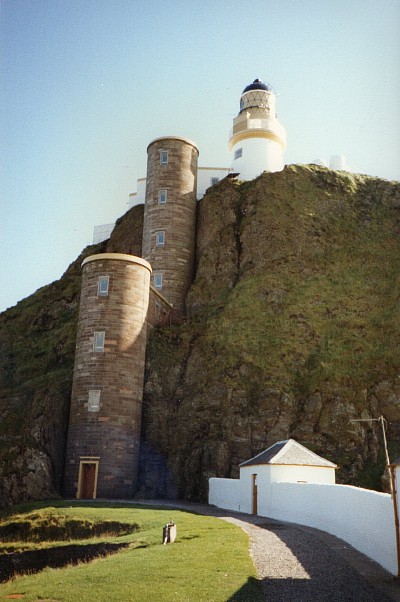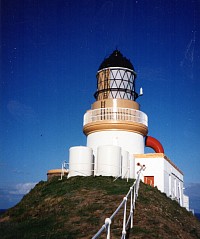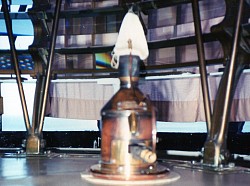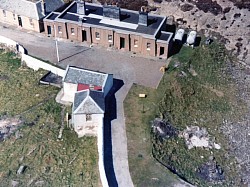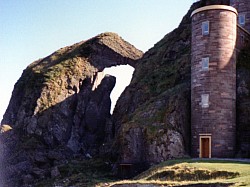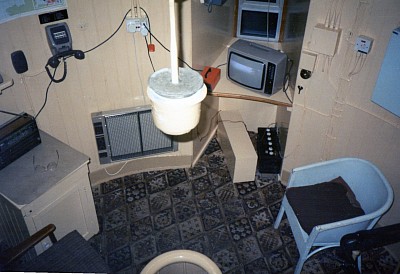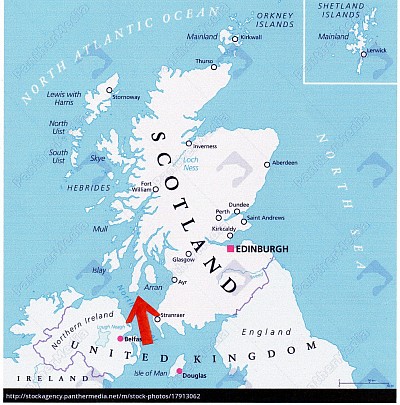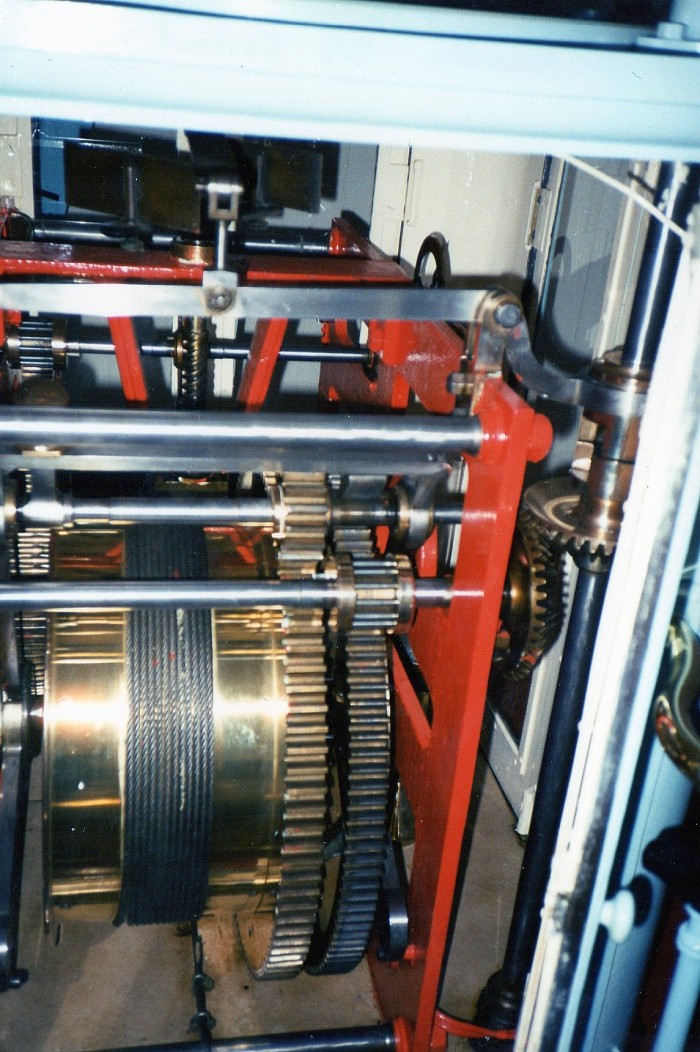Sanda, Kintyre penninsular
Sanda is situated close to the bottom end of the Mull of Kintyre as made famous with the song by Paul McCartney , the island can be reached by private boat the shortest route being from southend. This is an interesting island affording various terrain’s and was a favourite of mine (I seem to have a few favourites), you land at the northeast pier ,which was built to service the farm, the only building apart from the lighthouse on the island, the farm has a connection also with the music industry, for at one time it was owned and managed by Paul Jones of Manfred Mann fame, after landing you head eastwards past the farm and along by the only beach on the island the road then takes a right turn past a small cemetery and through a valley to emerge with a great view of the west side of Sanda with the lighthouse in the distance you can immediately see that this is not the usual design associated with lighthouses as the small light tower that is situated on top of the rock is accessed by two towers interconnected by a passageway. Once you reach the lighthouse the accommodation sits at the bottom of a cliff on the left so it is a odd feeling at first with rock faces on either side and sea on the others, there is also a small jetty facing south and afforded some protection from the more northerly seas.
At night when you went up the towers it was necessary to take a torch as the lighting was something else ! It consisted of bulbs stretched up the stairwell and passage way and was powered by a 12volt battery and a small Stuart Turner engine setup, the battery would initially take up a good charge and the bulbs would give out a decent light but this lasted only for a few hours and on most nights the bulbs just glowed and gave out little light, so a torch was needed, the watch room was manned through the night unlike a lot of the stations the reason being that the wind mechanism was of short duration and it wasn’t worthwhile to go down to the accommodation block as you would no sooner be there when you would need to return up there again but more importantly there were no adequate alarm systems to alert you of any problems. As you can see from the picture the watchroom was the height of luxury you may think I jest but compared to some I’ve seen this was quite comfy, note the weight from the winding mechanism as it travelled down through the tower
As mentioned before the accommodation block was situated at the bottom of a rock face which caused a few problems with dampness, some of the bedrooms were at the rear next to the rockface and these rooms were always dull and very cold in the winter, the only form of heating for these rooms were calor gas portable heaters and if you left them on overnight you would wake up in the morning almost asphyxiated and everything would be damp, through the water vapour that these fires produced and not being able to escape. The sitting room was pleasant enough as a coal fire was kept burning twenty four hours a day to give us hot water ( I must say there is definately no substitute for a roaring coal fire especially in deepest winter time ). One pleasant memory is of the keepers cooking pancakes on an old fashioned girdle and eating them hot with plenty of butter and jam while sitting relaxed by the fire. The farmer at the other side of the island had a lovely affectionate black Labrador and when he had to go off the island on business the keepers would take care of the dog at the station, it would be nice to have its company when on watch in the evening. Like most lighthouses Sanda had its inevitable ghost stories which were usually told to supernumeraries (trainee keepers ) by the keepers as a sort of sport so if you were a bit superstitious or the like and the seasoned keepers new this, then you were fair game for bit of fun, anyway not to digress, the labrador would always accompany you up the tower in the evening or during the night to the watch room but for some inexplicable reason no amount of coaxing could make it climb any further ( many years ago there was a tragedy at the light when a keeper took his own life ), so it makes you think, does the lab sense something that we are unable to, then there’s the unexplained occurrence of the smell of bacon and eggs coming from the bottom of the tower, spooky or what!!
From the accommodation block the wreckage is visible the of a war time Liberty ship when on its passage from the United States to Scotland, during the dark days of the second world war, probably carrying supplies for the war effort at a time when Britain was grateful for this lifeline from the allies, what must have it been like for the captain and his crew when disaster hit having had travelled thousands of miles across the atlantic and then founder twenty or thirty miles from their destination on the Clyde estuary on a the reef a mere hundreed Mtrs. or so from Sanda light ( See full size picture below )
As you can see from the picture opposite the watch room wasnt exactually luxurious but it did serve its function although a little cramped, but to be honest it was a lot cosier than most, notice the weight attached to the chain it went down the centre of the tower ( which is just visible at bottom of photo ) to work the gearbox that in turn made the light revolve and had to be wound up by the keeper on duty approxamatly every three quarters hours if my memory serves me right.
I remember one time washing dishes in the kitchen and we had a bit of trouble with sea gulls coming up to the window ledge tapping the pain of glass so I tapped the pane a bit to enthoustically one lunchtime and managed to put my knucle through it needless to say the principle was not to pleased but hey ho that's life and small incidents appeared to be major catastrophes to certain principles in those days, I've seen principles, as they say in Scotland loose the heed over small things
